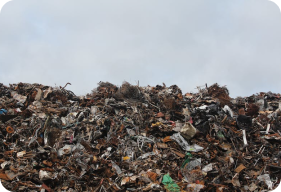
The US discards 40 million tons of food a year. Find out why and how to help.
Confronting Food Waste and Solving the Problem by changing consumption behavior

1.4
40
219
30 - 40
80
Some reasons…
More than 80% of Americans discard perfectly good food because they misunderstand expiration labels. The world needs a change in consumer behavior and to achieve it we need individual and collective commitment.
Join this cause with your donation, we are ready to face the biggest challenges.

Confronting Food Waste and Solving the Problem by changing consumption behavior
Americans are often impulsive in their food purchases, unrealistically assessing how much food is required, and as a result buying more food than they need or buying food they won’t actually eat. Our take-out society doesn’t use food in its entirety the way our ancestors used to. We underutilize leftovers and toss food scraps that can still be consumed or composted.
Wasting food has environmental
repercussions
Wasting food has irreversible environmental consequences: it wastes the water and energy it took to produce it, and generates greenhouse gases like methane, carbon dioxide and chlorofluorocarbons, which contribute to global warming. According to the World Wildlife Federation, the production of wasted food in the United States is equivalent to the greenhouse emissions of 37 million cars.
And economic
repercussions too
According to the nonprofit organization Feeding America, Americans waste more than $218 billion each year on food. Waste coming first from America’s homes (43%) and restaurants, grocery stores and food service companies (40%), where people throw out food, followed by farms (16%) and manufacturers (2%)
37
40
218
37
02
The challenge isn’t produce less food, but to waste less in the process.
Here’s how we can start:
Don’t misinterpret expiration labels on food that’s perfectly good to eat.
1
Share the wealth.
2
Plan meals and make deliberate grocery store shopping lists.
3
Reducing the Waste at America’s Restaurants
4
What is the Food Waste Recovery Hierarchy?

1
Source Reduction.
This goes back to the simple lesson of “only take what you need.” If we buy and create less food, we’ll throw less out.

2
Feed Hungry People.
Much of the food we throw out is perfectly edible. With 50 million people expected to suffer from food insecurity in 2022 alone, this is unacceptable. Food banks and shelters across the country would welcome the food that many Americans throw away.

3
Feed Animals.
Humans aren’t the only ones who need to be fed — our animals need sustenance too. Those food scraps we toss after dinner each night — that will surely end up in a landfill — can be saved for feeding farm animals.

4
Industrial Uses.
Did you know that some of the food you toss can be used to create biofuel and bio-products that could power your car? The earth has provided alternative energy in the form of sun and wind. Why shouldn’t our food be yet another way to source power?

5
Composting.
Near the bottom of the Food Waste Recovery Hierarchy is something every single person is capable of doing: composting their food waste. Composting not only prevents your food waste from entering a landfill (and creating even more greenhouse gases), but also improves soil and water quality that in turn, help future crops grow.

6
Landfill/Incineration.
This is the bottom of the Food Waste Hierarchy — and the last, final resort to the waste that we produce. Avoiding this tier starts with each and every one of us, by preventing waste at the top of the tier — right where it’s sourced and where we can make different decisions about how much we take, buy and create.

